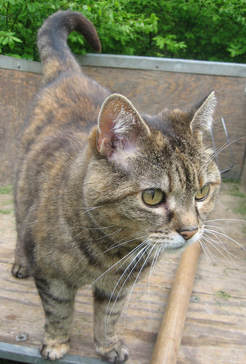|
The Dolch Sight Words list was developed by Dr. Edward Dolch in the 1930s and 40s. An educator by trade, Dr. Dolch analyzed the children’s books of that era and identified the most frequently occurring words, such as came, get, walk, when, brown, will, could, and thank. As a Title I reading specialist, I spent a fair amount of time encouraging struggling third grade readers to memorize dozens of ‘sight words’ from Dolch’s famous list. But defining ‘sight words’ as words on Dr. Dolch’s list doesn’t do justice to what ‘sight words’ really are, or more importantly, how they function in the process of reading. As I’ve come to a new understanding of sight words, I have come to a new understanding of how best practice spelling instruction greatly increases the rate at which words (not just Dolch words but all words) can be learned and stored in the critical lexicon or word dictionary of the mind. In my last post I said that research shows that mature readers read words in four ways: by decoding, by predicting, by analogy, and by sight. Unlike reading words by decoding, analogy, and prediction, reading words by sight does not involve some round about way of figuring out a word or some aspect of part-to-whole reading (sound-letter, patterns, roots, affixes, etc.). Rather, reading words by sight is about knowing a word immediately, no matter its length. When we read a word by sight, we pull it directly, in its entirety, from memory. The truly amazing part is that when we read by sight, each word we see immediately and effortlessly activates in our memory the word’s spelling, pronunciation, and meaning. These components are not experienced piece by piece. Rather, they are experienced as one wonderful bundle of looking-saying-understanding. To draw an analogy, look at the picture. When “cat” popped into your mind, that knowledge didn’t slowly blossom or come to you in pieces, first as your seeing a set of eyes, some whiskers, a nose, and a pair of ears, and then coupling that with the thought that it is some kind of animal, it’s a mammal, and so on. Rather, it came to you all at once, instantly, directly. This is because a cat is identifiable by sight. We perceive it and understand it just like we instantly perceive and identify (or read) words such as dog, fish, and cucumber. By the way, the picture is of our cat Pawpurr, now almost 22 years old! So aside from Pawpurr the cat, how does all of this relate to spelling? According to Linnea Ehri and Sandra McCormick, the processes that are at the heart of sight word learning are connection-forming processes. “Connections are formed that link the written forms of the words to their pronunciations and meanings," they say. "This information is stored in the reader’s mental dictionary or lexicon... These connections are formed out of readers’ general knowledge of grapheme-phoneme correspondences that recur in many words.” (p. 341). In other words, connections between letter units (graphemes) that symbolize sound units (phonemes), help us store words in memory. Now think: what subject teaches children to make connections between sound units (phonemes) and letter units (graphemes)? What subject helps children connect more complex sound units to more complex letter patterns? What subject connects meaning units (morphemes) with letter patterns, both long and short? It’s spelling, of course. Because they are so well spoken, I’ll quote Ehri and McCormick once again: “Spelling of words are like maps that visually lay out their phonological forms. Skilled readers are able to compute these mapping relations very quickly when they read words…When readers acquire working knowledge of the alphabetic spelling system, they can build a lexicon of sight words easily as they enounter new words in their reading” (p. 343). Spelling is important because it builds the mental dictionary that a reader uses every time he or she reads. The more words a child has stored in her mental dictionary, the better the chance that she will be able to add more words through reading and to read more fluently. So it makes sense to teach spelling, it makes sense to teach it regularly, and it makes sense to connect spelling to reading and reading to spelling. One mistake I made as an educator was to try and cram Dolch sight words into the heads of struggling readers without giving them more practice on noticing and then generalizing the specific patterns found in each word. In other words, I should have taught not only the sight word brown, but I also should have connected it to down, gown, town, frown, clown, and even downtown. Then I should have given my students opportunities to notice how these words work, spell these words, and read these words alone and in sentences. By teaching connections, strategies, and activities in spelling, we can help all students build a robust brain dictionary, critical for reading success. Citations Ehri, L. & McCormick, S. (2013). Phases of Word Learning: Implications for Instruction With Delayed and Disabled Readers. In D. E. Alvermann, N.J. Unrau, & R.B. Ruddell (Eds.), Theoretical models and processes of reading. (6th ed., pp. 339–361). Newark, DE: International Reading Association Comments are closed.
|
Mark WeaklandI am a teacher, literacy consultant, author, musician, nature lover, and life long learner.
|

 RSS Feed
RSS Feed